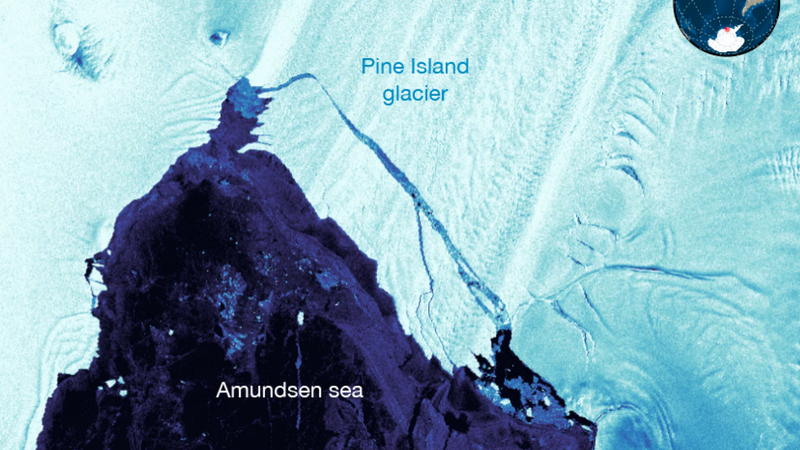Researchers using satellite imagery to observe conditions in the Antarctic reported that another massive iceberg broke off from the frozen continent this past weekend. This lasted slab of ice is reportedly more than a 100 square miles (160 sq. km) in size, which makes it about four times the size of Manhattan.
Unlike the last giant iceberg that broke away from Antarctica back in July, this one did not calve off of the Larsen C Ice Shelf. Instead, it came from the Pine Island Glacier (PIG), which has been retreating at an alarming rate over the past few years. Reportedly, the PIG loses approximately 45 tons of ice per year at the moment, and is responsible for about a quarter of the loss of ice in Antarctica.
While quite large, this latest iceberg has reportedly already started to break up into smaller sections as it floats out to sea. It’s size is large enough to create problems for ships passing through the region, but it is nothing compared to the 2240 square mile (5,800 square km) section that separated from the Larsen C a few months back. Scientists continue to track that slab of ice as well, and while it has reduced in size, it remains quite sizable.
According to this report, this is now the third major calving event from the Pine Island Glacier over the past few years, with the other two being nearly twice the size of this one. What concerns researchers the most isn’t necessarily the size of these icebergs, but the rate at which they are breaking free. A glacier of this size, located this far south, shouldn’t be calving off ice at this rate. And yet, it continues to do so, and is likely increasing in frequency.
On top of that, the glacier makes up about 10% of the drainage of the West Antarctic Ice Sheet, which means it is a significant contributor to potential rises in sea level. As Antarctica continues to warm, and more massive chunks of ice break free from the land mass there, the threat of rising sea levels becomes more of a concern.
To make matters worse, satellite images show that rifts are forming further inland, which means that the glacier is being eroded at a faster rate, and may start to calve larger chunks of ice like the one that dropped off the Larsen C earlier in the year. At the moment, the prognosis doesn’t look good, as the PIG retreats, it will allow even more ice, which is backed up behind it, to begin to melt. It seems like it is only a matter of time before that starts to happen, barring some unexpected change in the climate on Antarctica.
- Gear Review: The Xero Scrambler Mid is an Ultralight Hiking Shoe for Spring - March 1, 2023
- Gear Review: Yeti Roadie 48 Wheeled Cooler - August 18, 2022
- Kristin Harila Continues Pursuit of 8000-Meter Speed Record - August 16, 2022
